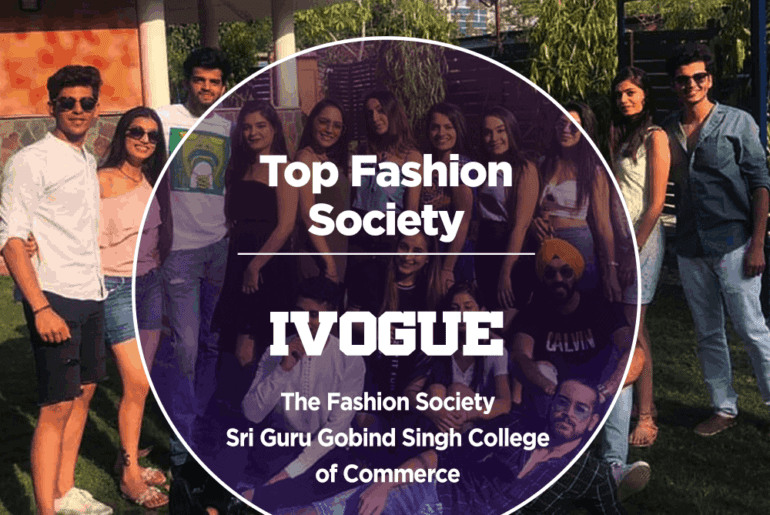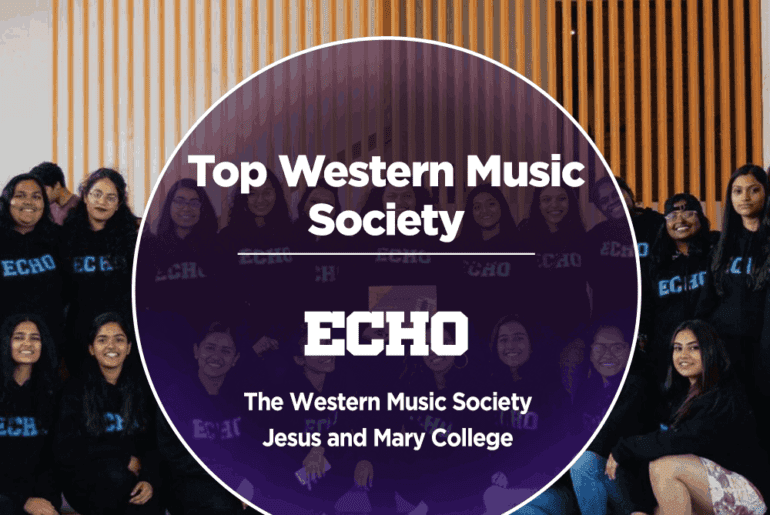A thing that brings all the aspirants of the University of Delhi in this country to a sense of fascination is the University’s engagement with the performing arts. With a plethora of opportunities in fields like dance, music, dramatic, students are exposed to the discipline and the adventure of the arts that interest them. DU Beat brings to you the first of the six installations of its analysis of the top society in DU. The hard work was persistent, and the competition heartening. Let’s delve into who made the cut and how.
Methodology
The best college society in each category was selected by creating a tally of the top 3 positions that could be won at various events. The society that secured the 1st position was awarded 3 points, the society that secured the 2nd position was awarded 2 points, and finally, the society securing the 3rd position was awarded 1 point.
25 college fests were considered in the making of the tally. The selection of these 24 colleges was based upon an analysis done by speaking with members of numerous college societies, and tracking the fests they considered most prestigious. Competitions organised independently and those with less than 4 participating teams were excluded. The considered colleges are:
| Shaheed Rajguru College |
| Maitreyi College |
| Daulat Ram College |
| College of Vocational Studies |
| Shivaji College |
| Institute of Home Economics |
| Lady Irwin College |
| Shyama Prasad Mukherji College |
| Kamala Nehru College |
| Delhi College of Arts and Commerce |
| Ramjas College |
| Sri Aurobindo College (Morning) |
| Sri Aurobindo College (Evening) |
| Sri Guru Gobind Singh College |
| Kalindi College |
| Hindu College |
| Keshav Mahavidyalaya |
| Bharti College |
| PGDAV College (Evening) |
| Moti Lal Nehru College (Morning) |
| Ramanujan College |
| Kirori Mal College |
| Shaheed Sukhdev College of Business Studies |
| Satyawati College (Evening)Maulana Azad College |
Top Three Positions
IVOGUE, the fashion society of Sri Guru Gobind Singh College, has won the best society accolade this time with 25 points. Galore of Maitreyi College followed at the second position with 22 points, and the third position was won by Debonair (Daulat Ram College) with 18 points.
Points Tally: Fashion
The Winning Society at a Glance
Ankit Aggarwal, President at IVOGUE, shared his thoughts on the team’s fourth consecutive victory- “This year our performance is titled as ‘Lost in our Reflection’ which portrays need of an individual to introspect and know about their true-self. This piece inculcates intellectual and experimental fashion together. We are really proud of the fact that we are a self-made society, we have done the designing, choreography, and every other task by ourselves, not depending on any outside help. It warms my heart to be surrounded by this talented bunch of people, their constant hard work for being the best and showcasing our best earned us victories and get acknowledged as the best fashion society yet again.”
Performing Members
Design:
Ankit (President)
Daman (Vice President)
Ishpinder
Harbandana
Divyjot
Public Relations:
Pranay (Head Coordinator)
Ankit
Ayush
Lakshay
Anshika
Choreography:
Daman
Ankit
Pranay
Harbandana
Divyjot
Other performing members:
Rabnoor
Kunjan
Kirandeep
Muskan
Chayan
Jasmine
Jugti
Prabhjot
Bisman
Ishita
Winners Tally
Out of the colleges we considered, I VOGUE won at the following:
1st: College of Vocational Studies, Ramjas College, Kirori Mal College, Keshav Mahavidyalaya, Ramanujan College, Maulana Azad College
2nd: Maitreyi College, PGDAV College (Evening), Kamala Nehru College
3rd: Shaheed Sukhdev College of Business Studies
Data Analysis and Compilation by:
Sakshi Arora
sakshia@dubeat.com
Anushree Joshi
Feature Image Designed by:
Palak Mittal for DU Beat






